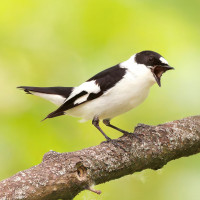Beskrivning
The Akrotiri peninsula has a variety of different habitats: a large salt lake, reedbeds, marshes, dry open areas with scattered trees and lots of cover for migrating birds.
Known for being the best place in the western palearctic to see jungfrutrana on migration when they use the salt lake to rest at the end of August/early September. Other nice birds you can see here are: större flamingo, mindre sumphöna, citronärla, sporrvipa, myrsnäppa, rödvingad vadarsvala, långnäbbad mås, svarthuvad trut, sandtärna, vitvingad tärna, purpurhäger, bronsibis, ormörn, brun kärrhök, stäpphök, biätare, aftonfalk, eleonorafalk, pungmes, asiatisk kalanderlärka.
Akrotiri peninsula is also a great area to find local scarcities and rarities: grön biätare tereksnäppa svartbukig flyghöna ökenlöpare ökenstenskvätta to name a few.
Detaljer
Tillgänglighet
A car is essential for exploring the different areas of Akrotiri. The salt lake can be viewed from different areas along the main road, but can be best viewed from the environmental centre where they have a viewing balcony that overlooks the lake.
Akrotiri marsh is signposted before the village of Akrotiri. There is a tower hide at the start of the marsh and a second hide which you can see from the road as you drive along the edge of the marsh. Much of the marsh can be viewed from the road. The flooded meadow on the corner of the western edge of the marsh is a good place to stop and view.
The area known as the "gravel pits" can be reached by taking the first left hand turn after the mini market when entering Akrotiri village. Then take the next left and follow the road through the houses and you'll see a sign for Saint George chapel on your left. Follow this road down towards the coast and you'll find the chapel. The chapel garden is a great place for migrating passerines. Just past the chapel is the "gravel pits", an area of dry, barren terrain (it's flooded in the winter), a great place for many migrant birds.
Terräng och habitat
Våtmark , Spridda träd och buskar , Sjö , Strand , Hav / ocean , VassarFörhållanden
Dammigt , Torrt , SumpigtRundtur
NejTubkikare behövs?
JaBästa säsong för skådning
Året runtBästa tid för ett besök
Vårsträck , HöststräckRutt
Grusväg , Asfalterad vägHur ansträngande vandring
Genomsnittlig vandringNås
Till fots , Cykel , BilFågeltorn / plattform
JaExtra information
jungfrutrana stop for just a few weeks every year at the end of August and they often arrive late and leave early in the morning so best to arrive and view the salt lake at first light.
The area is also know for its raptor migration and on some days, hundreds of Bivråk, brun kärrhök, Brun glada and aftonfalk can be seen along with many other species of birds of prey.
 male breeding Cyprus_1576.jpg)
 wild, Spring Cyprus_w_7883.jpg)
 Spring Cyprus_8606.jpg)


